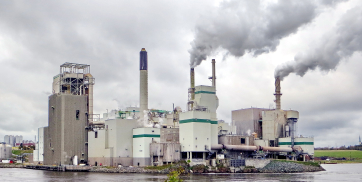This is the second in a series of four articles on the 2023 Voluntary Initiatives Report by Highwood Emissions Management.
To read the full Voluntary Emissions Reduction Initiatives in 2023 click here
Article:
As the world strives to achieve the climate goals set out in the 2015 Paris Agreement, parts of the world still do not have access to a single, basic, reliable energy source. As this, and other factors, continue to contribute to rising global energy demand, the energy industry has an important part to play. As the industry faces pressure to reduce GHG emissions, those who proactively exceed the regulatory requirements are starting to be rewarded. By participating in Voluntary Initiatives, energy companies are distinguishing themselves and leaders in clean-er energy, balancing both rising demand, and climate objectives.
Global Demand
Approximately 1 billion people still lack reliable access, or any access, to electricity. While environmental concerns are the driver behind energy transition, transition cannot be achieved at the expense of economic sustainability and development, or access to reliable energy. As the world population surpassed 8 billion in 2023, energy demand continues to increase, rather than decrease.
Canada Action notes the following anticipated demand increases:
- Natural gas demand is projected to grow by 1% annually from 2020-2035 (McKinsey)²
- Global oil demand is projected to grow to about 104 million barrels per day (bpd) by 2025 and up to 108 million bpd by 2030. (BMO Capital Markets)²
While the term energy transition is broadly thrown around, it is a common assumption that transition means moving completely away from fossil fuels to renewable sources of energy. However, this rising demand cannot be met without fossil fuels in the foreseeable future.
What is energy transition?
The concept of energy transition was first used by United States President Jimmy Carter in an address on the Nation of Energy regarding the 1970’s energy crisis:
“Look back into history to understand our energy problem. Twice in the last several hundred years, there has been a transition in the way people use energy… Because we are now running out of gas and oil, we must prepare quickly for a third change to strict conservation and to the renewed use of coal and to permanent renewable energy sources like solar power.”³
The World Economic Forum states, “energy transition is about more than decarbonization”⁴. While historical transitions were driven by availability of resources and cost, today’s transition is driven by environmental factors and the global effort to minimize climate change. However, the current transition is not simply about replacing fossil fuels.

Source: A beginner’s guide to the energy transition in five steps | World Economic Forum (weforum.org)
Energy transition does not replace one source of energy with another. Throughout history, as new energy sources were discovered and commercialized, the transformation was gradual. Coal did not immediately replace wood but was incorporated alongside it until it became an economic and widespread source of energy. Similarly, energy did not replace coal, but was supplementary to coal, competing in cost and efficiency.
For this current transition to be successful the energy triangle needs to be balanced. Transition, or transformation, cannot be achieved at the expense of access or economic stability.

Source: A beginner’s guide to the energy transition in five steps | World Economic Forum (weforum.org)
There is not one path to transition, but many paths that can be taken to develop cleaner sources of energy. While many immediately assume clean equates to renewables, increased efficiency and emissions mitigation of current energy sources is equally important. Generally considered a key contributor to climate change, the energy industry can also play a strategic part in transitioning the world to clean-er energy by participating in Voluntary Initiatives and exceeding regulatory minimums.
The Climate Impact of Energy
In an era of transition, where renewables also reached record high share of generation, 2021 and 2022 saw coal emissions grow year-over-year to record highs. As many countries undertake coal to gas initiatives, countries like China, India, Japan, Indonesia, and Vietnam continue annually to increase coal capacity. While developed countries push for clean energy, developing countries simply want access to energy. Fluctuating natural gas prices have even prompted some north American power producers to shift from natural gas back to coal to protect the bottom line.
In 2022 energy-related GHG emissions peaked at 41.3 Gt7 of CO2 equivalent, an increase of 6% from 2020-2021, and an additional 1% from 2021-2022⁵. The anthropogenic emissions (emitted by human activity) from carbon dioxide and methane account for approximately 89% and 10% of that total respectively⁵. Energy related carbon dioxide emissions are caused by fossil fuel usage, and the largest driver of growth was electricity demand. Energy related methane emissions are caused by venting, flaring, and leakage in the systems that produce and transport fossil fuels.
The Opportunity
While renewables continue to develop alongside fossil fuel, the energy industry has an opportunity to make a significant positive climate impact.
Diversifying and developing renewables are both capital intensive and require expertise and capabilities that are not always aligned with traditional energy expertise or operations. According to the International Energy Agency (IEA), less than 1% of total capital expenditures of the energy industry is invested in diversifying outside of core traditional operations.⁵
Energy demand is beyond the industry’s control and is driven by consumerism and a growing global population. Meeting that demand today requires fossil fuels, however, companies can undertake initiatives to lower the intensity of their operations. By reducing emissions from existing and new operations, energy companies can differentiate themselves to stakeholders who prioritize ESG performance alongside financial, and in some cases even profit from it.
“As of today, 15% of global energy related GHG emissions come from the process of getting energy out of the ground and to consumers. Reducing methane leaks to the atmosphere is the single most important and cost-effective way for the industry to bring down these emissions.”⁵
The IEA estimates that emissions could be reduced by almost 40% through methane reductions, reduced flaring and venting, and efficiency improvements by 2030⁶. Reducing emissions in this space requires more accurate quantification to accurately track reductions. By participating in Voluntary Initiatives, companies have access to the tools, support, frameworks, and markets to set and realize the benefits of targets that go beyond the minimum requirements. Energy producers can position themselves as leaders in energy transformation, setting standards to meet both rising future demands, alongside climate objectives.
- Did You Know? Global Oil & Gas Demand Continues to Grow! – Canada Action
- What is Energy Transition? (Definition, Benefits and Challenges) – TWI (twi-global.com)
- A beginner’s guide to the energy transition in five steps | World Economic Forum (weforum.org)
- The Oil and Gas Industry in Energy Transitions – Analysis – IEA
- Overview – Global Methane Tracker 2023 – Analysis – IEA





